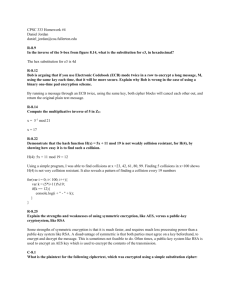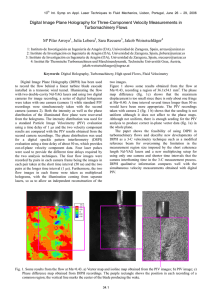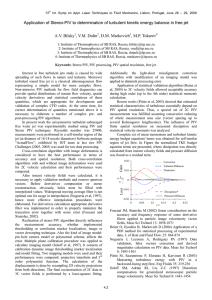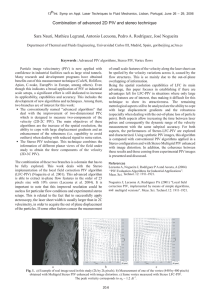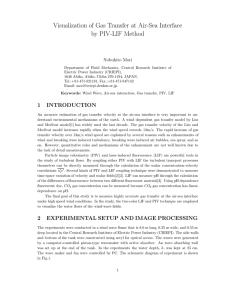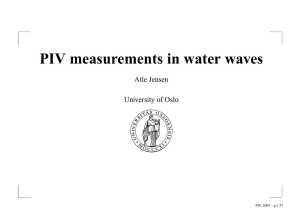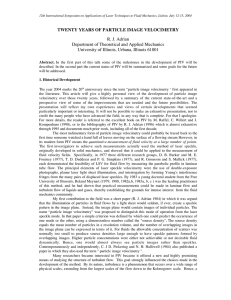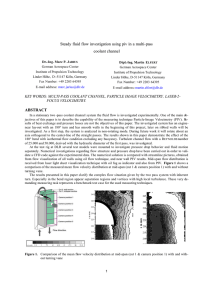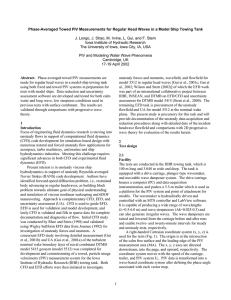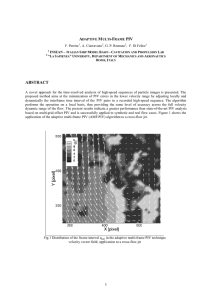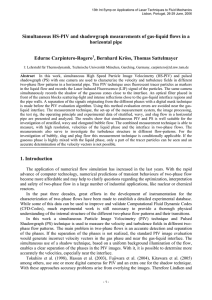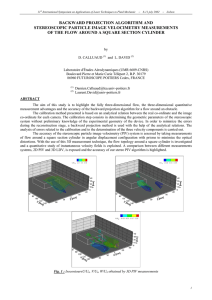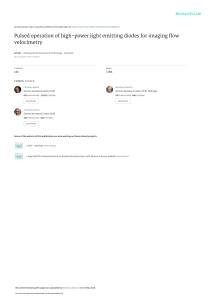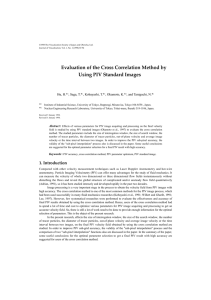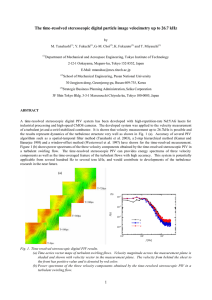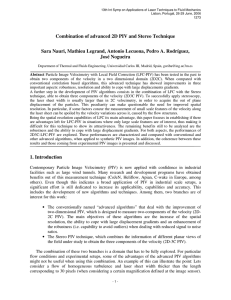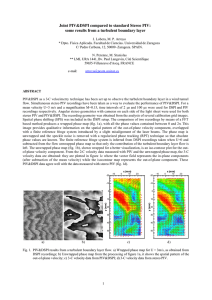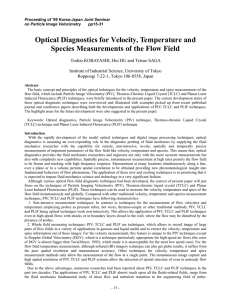Paper 37.1 PIV APPLIED TO LANDSLIDE GENERATED IMPULSE WAVES
advertisement
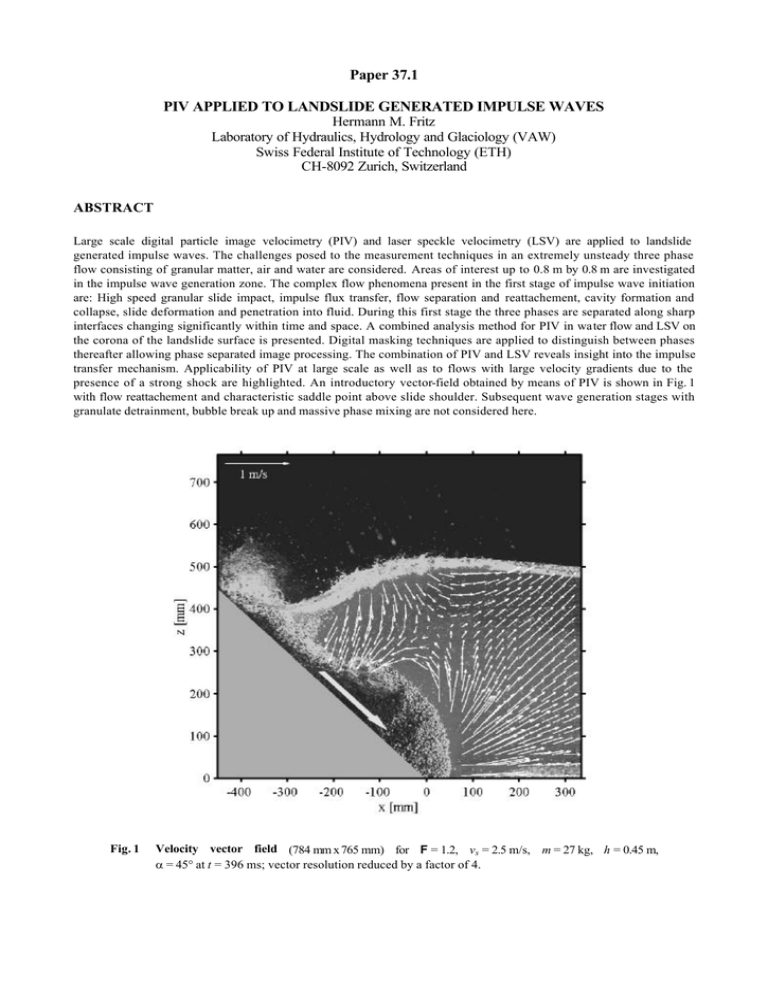
Paper 37.1 PIV APPLIED TO LANDSLIDE GENERATED IMPULSE WAVES Hermann M. Fritz Laboratory of Hydraulics, Hydrology and Glaciology (VAW) Swiss Federal Institute of Technology (ETH) CH-8092 Zurich, Switzerland ABSTRACT Large scale digital particle image velocimetry (PIV) and laser speckle velocimetry (LSV) are applied to landslide generated impulse waves. The challenges posed to the measurement techniques in an extremely unsteady three phase flow consisting of granular matter, air and water are considered. Areas of interest up to 0.8 m by 0.8 m are investigated in the impulse wave generation zone. The complex flow phenomena present in the first stage of impulse wave initiation are: High speed granular slide impact, impulse flux transfer, flow separation and reattachement, cavity formation and collapse, slide deformation and penetration into fluid. During this first stage the three phases are separated along sharp interfaces changing significantly within time and space. A combined analysis method for PIV in water flow and LSV on the corona of the landslide surface is presented. Digital masking techniques are applied to distinguish between phases thereafter allowing phase separated image processing. The combination of PIV and LSV reveals insight into the impulse transfer mechanism. Applicability of PIV at large scale as well as to flows with large velocity gradients due to the presence of a strong shock are highlighted. An introductory vector-field obtained by means of PIV is shown in Fig. 1 with flow reattachement and characteristic saddle point above slide shoulder. Subsequent wave generation stages with granulate detrainment, bubble break up and massive phase mixing are not considered here. Fig. 1 Velocity vector field (784 mm x 765 mm) for F = 1.2, vs = 2.5 m/s, m = 27 kg, h = 0.45 m, α = 45° at t = 396 ms; vector resolution reduced by a factor of 4.




